Sewing doesn’t have to be difficult. There are oodles of tools, sewing supplies and machine accessories that can make any task a snap.
Take the edge-stitch presser foot. While marketed primarily as an edge joining foot It can accomplish so many common sewing tasks — aside from edge joining — making it a must-have in your sewing toolkit.

Edge/Joining Foot

Sewing doesn’t have to be difficult. There are oodles of tools, sewing supplies and machine accessories that can make any task easy to do. Take the edge stitch presser foot. While marketed primarily as an edge joining foot it can accomplish many of other sewing tasks sewers perform on a daily basis making it a must-have presser foot in your sewing toolkit.
Most basic sewing machines don’t come stocked with a wide variety of presser feet, so don’t expect an edge stitch foot to be part of the machines packet of accessories. With more advanced models this is a presser foot that may very likely come with your machine. Either way, it is a good foot to have and worth the added investment is you have to purchase one.
What distinguishes this foot from a basic universal foot is the small blade that protrudes under the foot and is aligned with the machine needle when positioned in the center. It’s this blade that rides against a seam line, or fabric edge, that creates straight and even lines of stitching. Directing the machine needle at either the center or to any width to the right or left of center will determine the lines distance from the blade edge.
The edge stitch presser foot, also known as a stitch-in-the-ditch foot or edge joining foot, can perform a number of stitching techniques that include edge stitching, which means nothing more than sewing very close to the edge of fabric. It is particularly good when joining two edges of fabric together, known as edge joining. It is also an exceptional foot to use to do topstitching and understitching. Add to that sewing pin tucks and adding trim to the edge of, well, anything. Both straight and zigzag stitches can be used with this foot, or for that matter many other decorative and utility stitches that have width and can be performed using a universal presser foot.
So let’s further explore the many tasks this foot can do.
1. Edge joining
I don’t consider this an “everyday task,” but this is what this foot is designed to accomplish. Anytime two distinct pieces are to be joined side by side this is the foot to use. This is also a great tool to use for attaching trim to a fabric edge.
To join two pieces of fabric prepare the edges as desired. Turn a small allowance under to create a clean folded edge on each piece. Now with the foot in place, make sure the needle is in the center position.
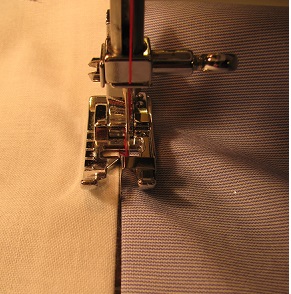

Position one edge along the right of the blade. Slide the other edge to the left of the blade. With the two edges flanking the blade stitch using either a regular zigzag stitch (below photos) or a decorative one (like the feather stitch shown in the above photo). Make sure as you sew the two edges ride against the blade smoothly.
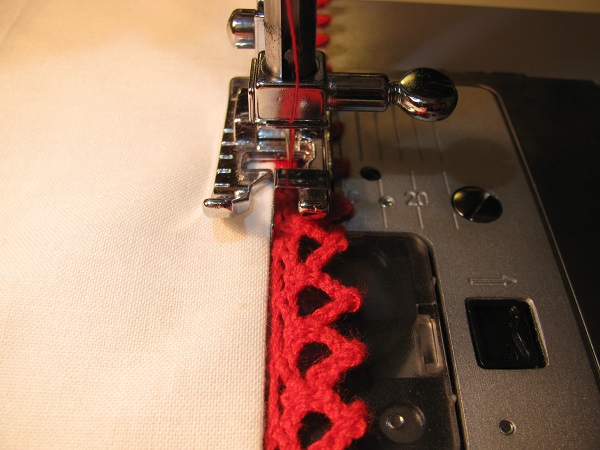

2. Edge stitching and top stitching
These two stitches are essentially the same. The difference is edge stitching is done very close to the edge of fabric, between 1/16” to 1/8” from the edge, while topstitching is typically ¼” to 3/8” from either a clean edge, like a neckline, or from a seam line.
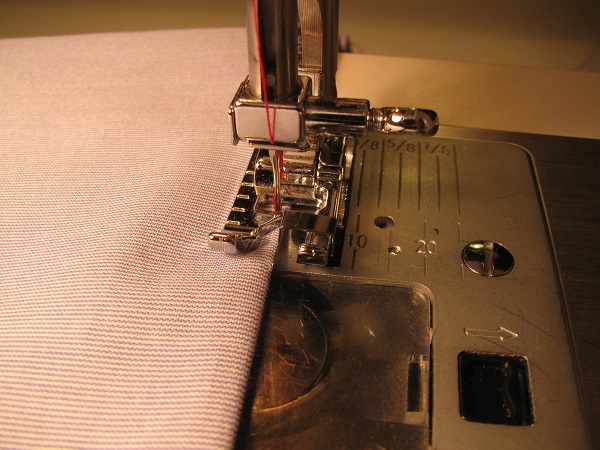
In either case, position the needle where you want the stitch to land either left or right of the center blade. With the blade riding either along a clean edge or along a seam line, stitch in place.
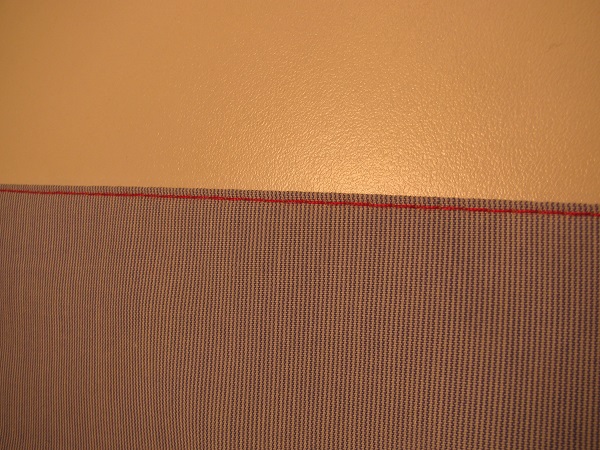
3. Stitch-in-the-ditch
For those unfamiliar with this technique it is a line of stitching that is done on the right side of the project and is sewn precisely on top of a seam line.
Anytime this type of stitch is required this is the presser foot to use because with the blade riding along the seam line it ensures the stitches go exactly where you want them. When done properly or exactly along the seam line, the stitch is almost invisible.

4. Understitching
Every garment sewer knows the value of understitching when used on facings. It is the secret to a beautiful neckline or armhole edge. To be properly sewn the stitching should be very close to the seam line and remain evenly spaced from the seam line for the length of the facing. Doing that with a regular foot takes practice, a good eye and a steady hand, so for many it is a challenging technique to master.

The edge stitch presser foot can help make this task easier and more effective. To use the foot for this purpose begin by positioning the needle to the right of the blade so it is roughly 1/16” to no more than 1/8” from the seam line. Lower the presser foot so the blade rests inside the seam line. Begin stitching making sure the blade rides within the seam line. This will ensure the understitching line is evenly positioned along the facing.
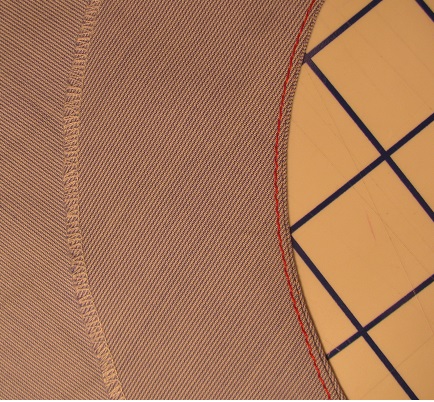
5. Pin tucks
Though not an everyday task, when the occasion occurs to sew pin tucks having this foot handy is a godsend. Because the foot’s primary function is to create straight and evenly spaced lines of stitching, this is a great foot for sewing pin tucks.
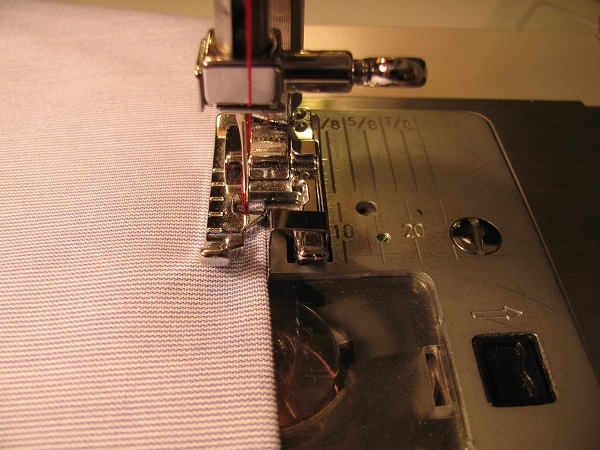
To begin, make sure the pin tuck lines are marked so they are evenly spaced. With the edge stitching foot attached, position the needle the proper distance you want the pin tuck to be to the left of the blade. Slide the folded edge against the blade, lower the presser foot and sew the pin tuck. Repeat for as many pin tucks needed.


I’m not sure what I should be answering here